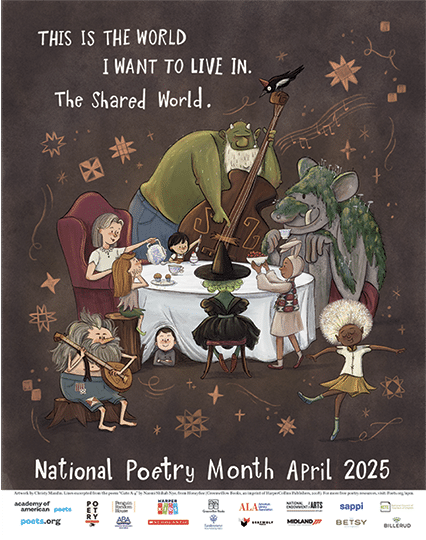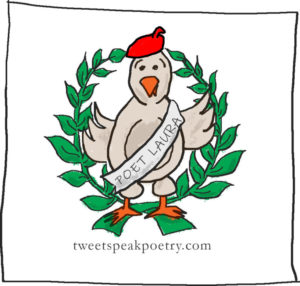Earth Day and National Poetry Month meet the Beat poets
It’s April again, when our nation and the world celebrate poetry—and then, on April 22nd, Earth will revel in its own day, which we all know should be every day.
As a girl, I did not write poetry but loved to read novels. Then, when I was a young mother in California, I took some classes at the Indian Valley College and studied the Beatnik poets. This was in the 1970s when Ferlinghetti, Ginsberg, and Brautigan were still alive. Gary Snyder is still here, in his 90s, and these Beat poets remind me of my trips into the corners and crevices of the City Lights Bookstore in San Francisco.
“As a poet,” Gary Snyder wrote, “I hold the most archaic values on earth. They go back to the late Paleolithic: the fertility of the soil, the magic of animals, the power-vision in solitude, the terrifying initiation and rebirth; the love and ecstasy of the dance, the common work of the tribe.”
As I often do, I’ve chosen a topic too large for one essay, but I’ll persevere. The Academy of American Poets initiated National Poetry Month in 1996, and as trees begin to blossom, it’s become a charmed time to share the love and grace of verse with each other and those who’ve not yet discovered the depth of poetry. It is community that embraces each other and our wordly visions, the play of words and all that inspire them—how they whet our appetite for more.
Much love of poetry is expressed in Ars Poetica, poetry about the art of poetry and a philosophy that goes back to Horace (65 BC–8 BC). This love and art of poetry includes the classics, the ancients, the tribal, modern poems, to include free verse, and I would even include the etched hieroglyphics and petroglyphs. From Eleanor Wilner’s poem “Ars Poetica,” here is the excerpt about the Vietnam Memorial in Washington D.C. (for me, the most moving monument in the city):
“the names on the shining black wall of the Vietnam
Memorial, the text of exactly what war has accomplished —
and look, there, standing high above the tragic scene,
not the little figures of the wise ancients that Yeats saw
carved into the deep blue stone — but there, standing high
above Arlington, against the blank lapis of the sky:
a horse with the torso and head of a man, yes, ….”
—excerpted from Ars Poetica by Eleanor Wilner
Clearly, Ars Poetica celebrates that poetry is everywhere, in words and beyond words. Modern poetry took a turn with the Beatnik poets and their rebellious poems such as Ferlinghetti’s poem I Am Waiting and Ginsberg’s renowned Howl. But the bohemians and beatniks also shared a love of the land, and Gary Snyder was even known as the poet laureate of Deep Ecology. Here is an excerpt from his poem “Riprap” from his book Riprap and Cold Mountain Poems published in Japan in 1959.
Lay down these words
Before your mind like rocks.
placed solid, by hands
In choice of place, set
Before the body of the mind
in space and time:
Solidity of bark, leaf, or wall
riprap of things:
Cobble of milky way.
—excerpted from “Riprap” by Gary Snyder
And with that, I transition to poetry and Earth Day. I’ve discovered that Gary Snyder, late in life, has befriended our great essayist and poet Wendell Berry. Two men who are such forces in love of our Earth. We all know Wendell Berry’s work and his great poem The Peace of Wild Things, and these two men now correspond and were persuaded to share their thoughts and letters in Distant Neighbors: The Selected Letters of Wendell Berry and Gary Snyder, published in 2015. I’m delighted and can listen to these two men speak endlessly of the harmony of place and ecology in a disjointed world.
One more beloved poet, as well as an anthropologist and essayist, is the late Dr. Loren Eiseley. He’s always been my muse, ever since I read his essays “The Star Thrower” and “The Innocent Fox” where Eiseley sits on his haunches before a fox den and plays with a chicken bone. All his works now inspire me. I don’t believe anyone loved this Earth more than Loren Eiseley, except perhaps Rachel Carson’s love of the sea. It would be captivating to see him in conversation with Wendell Berry and Gary Snyder. Here is an excerpt from Eiseley’s poem “The Old Ones” published in Notes of an Alchemist:
“I have found animals in me when I stroll in the forest.
I hesitate before a large dragonfly, I step
like a cat in the night, I have felt something
lift along my neck
when a wolf howls. I could learn easily
to worship those, but not man projected
in every feature ….”
—excerpted from “The Old Ones” by Loren Eiseley
In addition to Loren Eiseley’s numerous essay collections, he has at least three books of poems. National Poetry Month is a gift, and I love how Tweetspeak Poetry celebrates it. I came to know Tweetspeak during a Poetry Month workshop years ago and am glad of it. I’m grateful to the Beatnik poets who introduced me to poetry in 1972, so here, in closing, I’ll share my poem “Walking as Loren Eiseley,” first published at The Write Launch Magazine in April 2020.
Walking as Loren Eiseley
I traipsed through the field, pretending I was Eiseley—
the Bone Hunter—searching for origins
of poetry and God, full of The Immense Universe.
In the moment, I recalled once lifting a fossil at market,
brushing the hollows beneath my fingertips
to judge if it was real or a bejeweled fabrication.
Onward, to the west, near Comanche, a creek greeted me
and, beyond, I scrutinized clay cracked like a pattern
that resembled the tumbled map of my mind—where
my ears were tickled by the trickle of a stream
in its passage toward obscure roadrunners and coyotes.
I followed four-toed pointed tracks, half-hidden
in mesquite brush, speckled scratches beneath prairie grass
where a skeletal shell of an armadillo wrested my gasp
at the unexpected, but Mr. Eiseley would have foreseen
the cadaver, would have had his questions primed,
so, I troubled the corpse and mused to master its mystery,
such as how he’d filled the buzzards, leaving only a drop
of life’s slime, and I asked him of all things he’d seen,
and he revealed the vantage of a ground walker
who’d moseyed the plains since days of the dinosaurs.
He’d seen it all, and, like the Bone Hunter, I looked
into empty eyes where the creature had held God’s secrets
but found him reluctant to share. I wished the ‘dillo well
and walked on through the field, my boots my armor, and there,
my eyes fell to a lone Indian Paintbrush. I reached to pluck the bud,
then remembered I was Loren Eiseley. So, I marveled at the vigor
steadfast in a solitary bloom amidst the arid turf—its orange
brilliance left to shine, to relinquish its petals and pods. I blessed
its seeds to the wind—just as the eagle-eyed Bone Hunter
would have done before he, too, within the dirt did abide.
—Sandra Fox Murphy
Your Turn
Write about what poetry is to you—why you celebrate it. Express how nature is poetry and vice versa, and how the natural world speaks to you, to humankind. Write about the power and draw of place, such as how Snyder found a place in Buddhism, how Berry conveys grace to agriculture and his roots, and how Eiseley relentlessly searched for himself in nature and his reflection in wildlife. In the words of Jack Kerouac, “I saw that my life was a vast glowing empty page and I could do anything I wanted.”
Editor’s Note: Visit Poetic Earth Month to discover where National Poetry Month and Earth Day meet.
Photo by Dennis Wong, Creative Commons License via Flickr. Post by Sandra Fox Murphy.
- Poet Laura: The Beats, National Poetry Month, and Earth Day - April 2, 2025
- Poet Laura: The Consequence of Cats - March 5, 2025
- Poet Laura: A Concert in the General Store - February 5, 2025



Bethany R. says
So much great information, poetry, and transitions here, Sandra. “As I often do, I’ve chosen a topic too large for one essay, but I’ll persevere,” made me smile.
Those ending words from “Riprap” that you shared struck me in particular.
“Solidity of bark, leaf, or wall
riprap of things:
Cobble of milky way.”
Collage of the universe.
“I reached to pluck the bud,
then remembered I was Loren Eiseley. So, I marveled at the vigor
steadfast in a solitary bloom amidst the arid turf”
Wonderful words and image, thank you.
Michelle Ortega says
I second Bethany’s note about your “topic too large!” It made me smile, and also it reminded me of the breadth that poetry covers because I often hone in on a detail for my work that begs expansion.
I came across Lawrence Ferlinghetti in a casual way, during my first trip to Shakespeare and Co in Paris. The poetry section at that time was wound around a labyrinth of stacks, and had an iron gate across the aisle, inviting an exploration by any who would pass. I chose “European Poems and Transitions” and started there, learning about his connection to the shop and City Lights.
Wonderful journey woven through your words, Sandra, thank you!
Sandra Fox Murphy says
Thank you, Michelle. I’ve always wanted to browse that bookstore in Paris! In spite of French being my minor, I’ve never been to France. I had an infant at home when I was invited to Montpelier University, so instead, I sent my teenage son to Toulouse for an exchange program. Life is odd. I did love driving into San Francisco (I lived in Marin County) to visit the City Lights Bookstore. In the 1970s it was a dark and old building that felt full of secrets, books stacked everywhere, even along the rickety stairs to all the levels. So full of history. I do love how Shakespeare & Co kept the precious poetry behind an iron gate!
Megan Willome says
I saw my first Indian Paintbrush of this spring yesterday.
Sandra Fox Murphy says
May it spread its seeds far and wide!